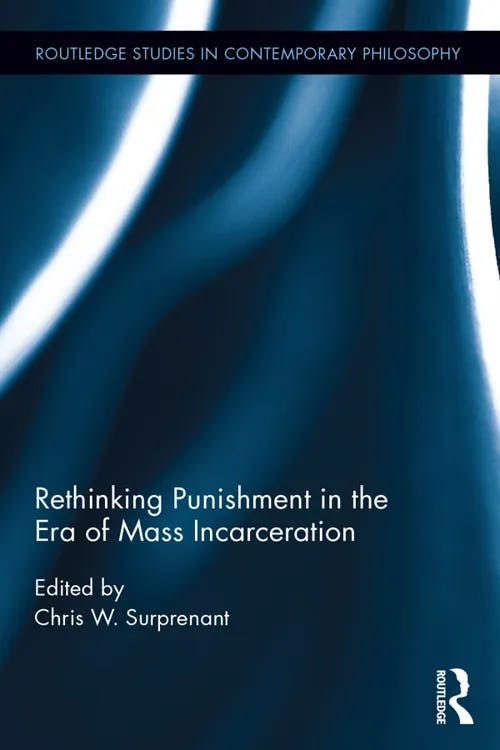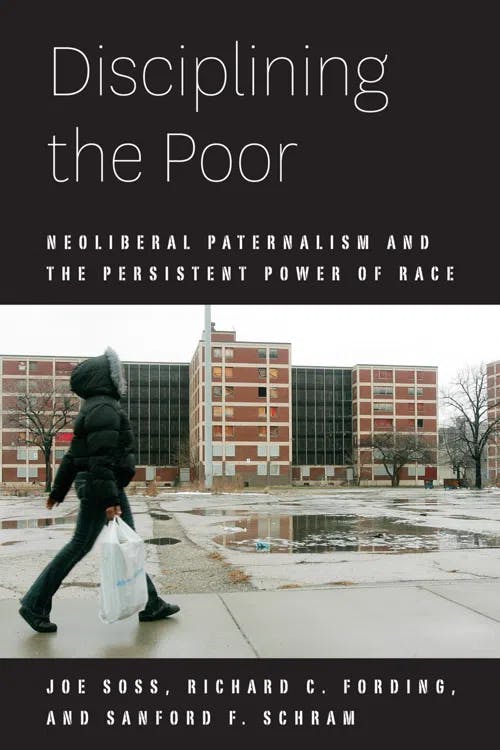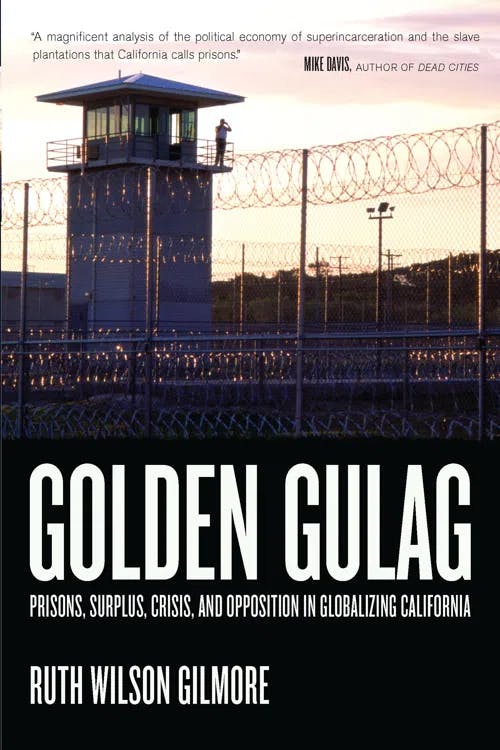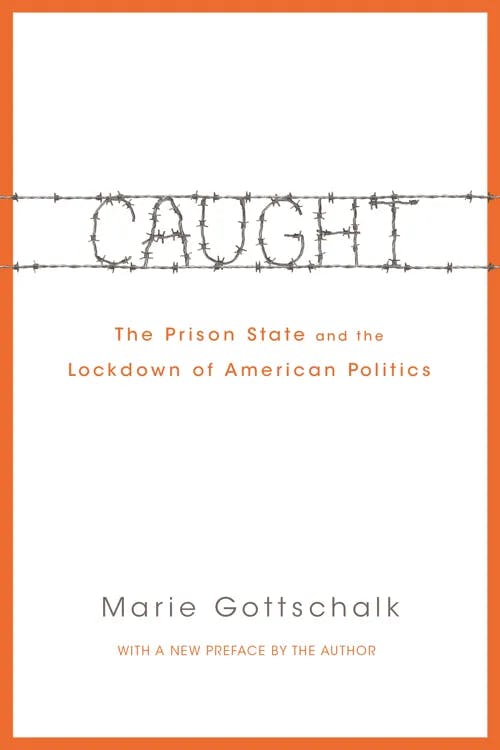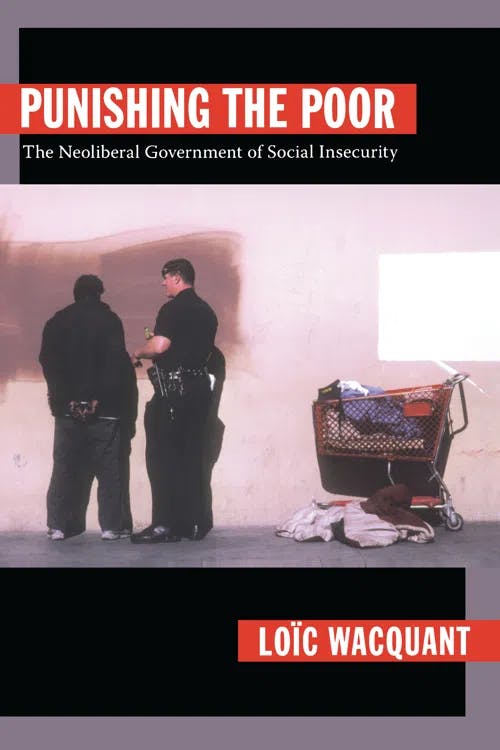What is Mass Incarceration?
MA, Sociology (Freie Universität Berlin)
Date Published: 03.08.2023,
Last Updated: 07.09.2023
Share this article
Defining mass incarceration
Mass incarceration refers to the widespread expansion of the carceral system in the United States, resulting from the criminalization of nonviolent acts related to poverty, drug addiction, and other social problems. To understand the scope and magnitude of mass incarceration, it is useful to start by looking at the numbers. For instance, as Chris W. Surprenant reports in Rethinking Punishment in the Era of Mass Incarceration,
[...] the US is second in the world in per capita incarceration, behind only the small island nation of the Seychelles. 2.3 million people currently occupy American prisons and jails, 0.71% of our population or approximately 1 out of every 140 people. This problem extends beyond jails and prisons and to our criminal justice system more generally. 820,000 Americans are currently on parole, which is a conditional release from prison, and another 3.8 million people are on probation, which often serves as an alternative to prison or jail. In total, a staggering 7 million people—1 out of every 46 Americans—are under the control of the US criminal justice system. (2017)
Edited by Chris W. Surprenant
[...] the US is second in the world in per capita incarceration, behind only the small island nation of the Seychelles. 2.3 million people currently occupy American prisons and jails, 0.71% of our population or approximately 1 out of every 140 people. This problem extends beyond jails and prisons and to our criminal justice system more generally. 820,000 Americans are currently on parole, which is a conditional release from prison, and another 3.8 million people are on probation, which often serves as an alternative to prison or jail. In total, a staggering 7 million people—1 out of every 46 Americans—are under the control of the US criminal justice system. (2017)
Yet, things were not always like this. In fact, a key dimension of mass incarceration is that it is a relatively recent phenomenon. Particularly since the 1980s, the US prison population has nearly quadrupled (Loïc Wacquant, Punishing the Poor, 2019). While the above passage established the sheer magnitude and reach of the American carceral system in the age of mass incarceration, we have to go beyond the statistics to elucidate the forces behind why these numbers have ballooned so much in recent times.
This study guide, therefore, opens with an overview of the historical context out of which many scholars associated with mass incarceration believe the phenomenon has emerged. It then covers some of the distinctive features that characterize mass incarceration. From there, we will review a case study that ties all of these points together in the form of a real-life example. Finally, this study guide concludes with a reflection on the wider societal impacts of mass incarceration and an exploration of the work currently being done to dismantle it.
Historical context: why mass incarceration?
The prison itself has long predated mass incarceration. First in Europe and then in the United States, prisons have a history as spaces where the poor, the recalcitrant, and often racialized groups have been sequestered from the rest of society as a means of discipline. (For more on the history of the prison, see How to Read Foucault's Discipline and Punish [2011].) Contemporary mass incarceration in the United States certainly has important historical continuities with these earlier forms of imprisonment — particularly in their targeting of Black and poor people (see Summary and Analysis of The New Jim Crow: Mass Incarceration in the Age of Colorblindness, 2016).
Yet the dramatic expansion of mass incarceration in recent times is something that many scholars associate with the financial crisis of 1973, and the subsequent neoliberal restructuring of the 1980s. Mass incarceration both serves to remedy some of the resulting social issues associated with these events, and closely abides by much of the ideology associated with the neoliberal project.
Neoliberal restructuring and mass incarceration
The financial crisis of 1973 marked a turning point in the United States. Prior to that, the country was dominated by Fordism — associated with the welfare state, high levels of employment, and assembly-line factory production. Due to the financial crisis all of this began to change, as unemployment sharply rose and factories began to automate and outsource their production processes. In turn, the Fordist-era welfare state that once helped to curtail some of the more erratic aspects of the free market (through public spending on social programs) became incompatible with the changing times.
Neoliberalism emerged as a response to the crisis of Fordism. It refers to a form of market fundamentalism that is associated with the privatization of public services, government deregulation of the economy, ideologies centered on individual responsibility, and an emphasis on law and order. In a climate increasingly set on letting the laws of the market serve as the corrective to the crisis, Joe Soss, Richard C. Fording, and Sanford F. Schram argue that,
In the 1970s and 1980s, neoliberals initially adopted a laissez-faire stance, seeking to weaken the market-constraining effects of state regulations and the welfare state (Harvey 2005). Over time, however, reformers shifted to a more ambitious agenda (Peck and Tickell 2002). […] Rather than shrinking the state, neoliberals have worked to restructure it and harness its capacities. (2011)
Joe Soss, Richard C. Fording, and Sanford F. Schram
In the 1970s and 1980s, neoliberals initially adopted a laissez-faire stance, seeking to weaken the market-constraining effects of state regulations and the welfare state (Harvey 2005). Over time, however, reformers shifted to a more ambitious agenda (Peck and Tickell 2002). […] Rather than shrinking the state, neoliberals have worked to restructure it and harness its capacities. (2011)
It was in this restructuring and harnessing of the capacities of the state that many scholars believe mass incarceration emerged. Particularly in light of the widespread unemployment of factory workers and the need to find new capital investment opportunities in a time of financial crisis, the widespread expansion of the prison system became an increasingly prevalent solution to these issues. Let’s explore each of these factors in more depth in terms of how they pertain to the features of mass incarceration.
Key features of mass incarceration
From welfare to carceral: the state and mass incarceration
As the welfare state became incompatible with the imperatives of neoliberalism, many scholars of mass incarceration argue that the state underwent a reconfiguration to align with this new stage in the economy. Excessive public spending in the form of welfare policies, for instance, became the target of intense ideological attacks for supposedly enabling laziness and moral decay — such views were a hallmark of neoliberalism and the kinds of policy agendas that helped enable mass incarceration. Soss, Fording and Schram argue that the state took on a new, paternalistic character,
Neoliberalism and paternalism emerged together in U.S. politics and converged on a shared disciplinary project. Together, they have redefined poverty governance around a disciplinary agenda that emphasizes self-mastery, wage work, and uses of state authority to cultivate market relations. (2011)
Paternalistic views of tough love were purported to inspire self-sufficiency and motivation by slashing a bloated bureaucratic state and leaving constituents to fend for themselves. Just as the state began to rescind its welfare policies, it took on a disciplinarian character through a tough-on-crime approach that targeted the poor and minorities — those hit hardest by the financial crisis and subsequent neoliberal restructuring.
This time period, therefore, saw the criminalization of a whole host of social issues related to poverty and drug use. Through the “War on Drugs” for example, the criminal penalties for drug use and possession became markedly more severe as mandatory minimum sentences without chance of parole were imposed. The result is that,
Now, some thirty years later, with strict sentencing guidelines and other law enforcement practices, such as “stop-and-frisk” and “zero-tolerance” policies, the number of people of color who are incarcerated eclipses that of white citizens—despite data that suggests drug usage among these groups is not so uneven. (2016)
Now, some thirty years later, with strict sentencing guidelines and other law enforcement practices, such as “stop-and-frisk” and “zero-tolerance” policies, the number of people of color who are incarcerated eclipses that of white citizens—despite data that suggests drug usage among these groups is not so uneven. (2016)
Thus, it is said that the state redirected its powers from welfarism towards a carceral agenda marked by the ramping up of policing and the creation of a wide range of new, punishable offenses that could land people in prison. And, importantly, these laws especially targeted Black people and members of other minority groups.
Racism and mass incarceration
As we have already touched upon above, mass incarceration disproportionately impacted minority groups. The crisis of 1973 saw massive levels of unemployment, particularly of a generation of factory workers who were “de-skilled” under the Fordist assembly line model. As companies began to downsize and outsource in search of cheaper and more flexible labor, many of these workers were no longer needed. Michelle Alexander goes on to explain in The New Jim Crow,
The intuition of those residing in ghetto communities that they had suddenly become disposable was rooted in real changes in the economy—changes that have been devastating to poor black communities as factories have closed, low-skill jobs have disappeared, and all those who had the means to flee the ghetto did. (2019)
Simultaneously, with the social upheaval of the 60s and 70s — in the form of the Civil Rights and anti-war movements, for example — these swathes of unemployed people posed a potential threat to the emergent neoliberal order (Mariame Kaba, We Do This 'Til We Free Us, 2021).
Scholars such as Michel Foucault, Silvia Federici, and Angela Davis have long argued that prisons serve as sites for warehousing surplus labor as well as for disciplining the rebellious and the recalcitrant. In the era of mass incarceration, this role of the prison is brought into even sharper focus. As Ruth Wilson Gilmore reports in Golden Gulag,
In 1996, 43 percent of third-strike prisoners were Black, 32.4 percent Latino, and 24.6 percent Anglo. The deliberate intensification of surveillance and arrest in certain areas, combined with novel crimes of status, drops the weight of these numbers into particular places. [...] The correspondence between regions suffering deep economic restructuring, high rates of unemployment and underemployment among men (cf. S. L. Myers 1992), and intensive surveillance of youth by the state’s criminal justice apparatus present the relative surplus population as the problem for which prison became the state’s solution. (2007)
Ruth Wilson Gilmore
In 1996, 43 percent of third-strike prisoners were Black, 32.4 percent Latino, and 24.6 percent Anglo. The deliberate intensification of surveillance and arrest in certain areas, combined with novel crimes of status, drops the weight of these numbers into particular places. [...] The correspondence between regions suffering deep economic restructuring, high rates of unemployment and underemployment among men (cf. S. L. Myers 1992), and intensive surveillance of youth by the state’s criminal justice apparatus present the relative surplus population as the problem for which prison became the state’s solution. (2007)
Indeed, as the opening of this study guide indicates, the number of people incarcerated or entangled in the carceral system has grown exponentially as a result of the enforcement of new criminal offenses that specifically target marginalized groups who were disproportionately impacted by neoliberal restructuring. When drug dealing and other forms of informal work increasingly became the only way to get by under the bleak economic circumstances, the tough-on-crime solution put forth by the neoliberal paternalist state was to put marginalized people behind bars. The result was the massive expansion of prison construction projects, and even with far more prisons than ever before, they are still increasingly crowded beyond capacity (Gilmore, 2007). This fact brings us to the third defining characteristic of mass incarceration: that it has become an increasingly prosperous industry in its own right.
The prison industrial complex
One element of mass incarceration which doesn’t quite add up, in an era where public spending has been so staunchly under attack, is how the construction and maintenance of this drastically expanded prison system is funded. According to Marie Gottschalk, the costs associated with the prison system under mass incarceration can be enormously high. For example,
New York State […] spends about $60,000 per year […] and New York City […] spends $168,000 per year for each inmate in the city jail system. (2016)
Marie Gottschalk
New York State […] spends about $60,000 per year […] and New York City […] spends $168,000 per year for each inmate in the city jail system. (2016)
Beyond the costs to house prisoners, there are also those incurred to build the prisons themselves or to fund the police forces necessary to patrol and enforce all the aforementioned laws.
While it often gets less air time (in the overall picture of the succession from financial crisis to neoliberalism to mass incarceration), the role of prisons as lucrative investment opportunities is a key piece to the puzzle. As Loïc Wacquant reports in Punishing the Poor,
big Wall Street brokerage houses such as Merrill Lynch, Prudential-Bache, and Shearson Lehman Brothers [...] saw in it a goldmine of fantastic profits. In 1988 a Heritage Foundation report presented private imprisonment as a ‘new economic and technological frontier’ and predicted—the better to produce —the imminent engagement of the country’s largest firms on this new business front. (2009)
Loïc Wacquant
big Wall Street brokerage houses such as Merrill Lynch, Prudential-Bache, and Shearson Lehman Brothers [...] saw in it a goldmine of fantastic profits. In 1988 a Heritage Foundation report presented private imprisonment as a ‘new economic and technological frontier’ and predicted—the better to produce —the imminent engagement of the country’s largest firms on this new business front. (2009)
Beyond being vessels for investment capital, prisons are financially lucrative in numerous other ways, which is a key reason why they have expanded and become increasingly entrenched in American society. Today, prisons are also part of a wider assemblage of corporations and firms that help maintain them — a phenomenon known as the prison industrial complex (PIC). These services range from security to food provisions and logistics services — creating a loop of profit and industry out of the prisons themselves.
Moreover, private prisons make money from a number of income streams, central among them being inmate occupancy rates. While in prison, inmates themselves have been converted into what Gottschalk calls “tantalizing cash cows,” as “[p]rivate agencies have sprung up across the country to negotiate prison space on a flat fee per bed basis” (2016). State-run prisons, meanwhile, often finance their construction and maintenance via government bonds, which investors can purchase at high interest rates, making them an attractive investment opportunity for private firms in need of moving their capital (Gilmore, 2007).
Case study: the California prison boom
In order to bring all of these points into more tangible focus, it is useful here to use a case study example. To do so, let’s look more closely at Ruth Wilson Gilmore’s book Golden Gulag: Prisons, Surplus, Crisis, and Opposition in Globalizing California (2007). Gilmore studies the California prison boom that took place since the 1980s. She begins by asking,
How and why, then, did California go about the biggest prison-building project in the history of the world? In my view, prisons are partial geographical solutions to political economic crises, organized by the state, which is itself in crisis. Crisis means instability that can be fixed only through radical measures, which include developing new relationships and new or renovated institutions out of what already exists. (2007)
Ruth Wilson Gilmore
How and why, then, did California go about the biggest prison-building project in the history of the world? In my view, prisons are partial geographical solutions to political economic crises, organized by the state, which is itself in crisis. Crisis means instability that can be fixed only through radical measures, which include developing new relationships and new or renovated institutions out of what already exists. (2007)
Gilmore identifies the surpluses — of state capacity, labor, and capital — that produced the 1973 financial crisis and how the state reconfigured itself in order to absorb them through the prison system. Let’s take a closer look at how each surplus was remedied through mass incarceration.
A carceral solution to political-economic crisis
Golden Gulag opens with an examination of California’s political economy in the 1970s and the conditions that led to neoliberal restructuring there. Gilmore details the contradictions of capitalism in its tendency to produce “the conditions for its own undoing; the production of surplus is necessary, or else there’s no profit, while the overaccumulation of surplus is crisis” (2007). In the particular case of Fordism, this refers to the way that the assembly line production process was so profitable that there was an overaccumulation of capital that needed to be recirculated. For Gilmore, this surplus in capital is combined with the other surpluses we have examined earlier in this study guide: state capacity and labor. Of this she writes,
These shifts produced surpluses of finance capital, land, labor, and state capacity, not all of which were politically, economically, socially, or regionally absorbed. The new California prison system of the 1980s and 1990s was constructed deliberately—but not conspiratorially—of surpluses that were not put back to work in other ways. Make no mistake: prison building was and is not the inevitable outcome of these surpluses. It did, however, put certain state capacities into motion, make use of a lot of idle land, get capital invested via public debt, and take more than 160,000 low-wage workers off the streets. (2007)
In the book, Gilmore details the political calculations of politicians seeking power and legitimacy (in a time when the state was under attack) by making prison investment deals with private corporations. In line with the neoliberal turn, short-term economic gains were prioritized under the banner of market fundamentalism, and the popularity of tough-on-crime ideology criminalized “persons who correspond demographically to those squeezed out of restructured labor markets” (2007). These different logics converge to uphold a system that prioritizes punitive solutions to social problems — one that is deeply embedded in the wider social fabric of California and beyond.
Closing thoughts
Under mass incarceration, the prison has become a catchall for dealing with the myriad social problems under neoliberalism in the United States. As the state turned from welfarist to punitive, poverty and drug use are increasingly managed through means of criminalization. Since the 1980s, the prison also became a lucrative investment opportunity for private interests — ranging from the sale of government bonds to build prisons to the assemblage of firms known as the prison industrial complex (PIC) who also capitalize on servicing mass incarceration. As of 2023, around 1.68 million people are incarcerated in the United States, according to recent data reported by the Statista Research Department. Moreover, the country spends upwards of $80 billion a year on the prison system (Donna Murch, Assata Taught Me, 2022).
Mass incarceration continues to have significant impacts on the social fabric of communities across the United States. Incarceration rates are so high that they disrupt generations of families as well as entire neighborhoods (Summary and Analysis of The New Jim Crow: Mass Incarceration in the Age of Colorblindness, 2016). Moreover, the increased police presence and levels of surveillance in poor and minority communities as a result of the “War on Drugs” has also been criticized by activists and scholars of mass incarceration. They argue that mass incarceration perpetuates poverty, violence, drug use, and other social problems because people with a criminal record are subsequently barred from many employment opportunities.
Therefore, despite the enduring prevalence of mass incarceration today, there are myriad scholars, organizations, and grassroots efforts involved in decarceration. They advocate for decreasing reliance on the carceral system through reduced police funding, and providing more alternatives to prison sentences through things like bail reform — particularly in the case of nonviolent offenses. A significant roster of figures including Angela Davis, Ruth Wilson Gilmore, and Mariame Kaba believe that investing in community resources such as education, drug rehabilitation support, and other social services would help to alleviate the underlying causes of crime (rather than perpetuating them, as is the case with the carceral system). While mass incarceration deeply impacts American society, the works of proponents of decarceration envision a future where fewer people are behind bars.
Further reading on Perlego
Gruber, A. (2020). The Feminist War on Crime. University of California Press. Available at: https://www.perlego.com/book/1388929/the-feminist-war-on-crime-the-unexpected-role-of-womens-liberation-in-mass-incarceration-pdf
Hackworth, J. (2014). The Neoliberal City. Cornell University Press. Available at: https://www.perlego.com/book/534266/the-neoliberal-city-governance-ideology-and-development-in-american-urbanism-pdf
Hinton, E. (2016). From the War on Poverty to the War on Crime. Harvard University Press. Available at: https://www.perlego.com/book/1133812/from-the-war-on-poverty-to-the-war-on-crime-the-making-of-mass-incarceration-in-america-pdf
Muñiz, A. (2015). Police, Power, and the Production of Racial Boundaries. Rutgers University Press. Available at: https://www.perlego.com/book/400721/police-power-and-the-production-of-racial-boundaries-pdf
Shakur, A. (2016). Assata: An Autobiography. Zed Books. Available at: https://www.perlego.com/book/2011983/assata-an-autobiography-pdf
Smith, N. (2005). The New Urban Frontier. Routledge. Available at: https://www.perlego.com/book/1603229/the-new-urban-frontier-gentrification-and-the-revanchist-city-pdf
What is mass incarceration in simple terms?
What is a cause of mass incarceration?
Which scholars are associated with mass incarceration?
Bibliography
Alexander, M. (2019). The New Jim Crow. Penguin Books.
Gilmore, R. W. (2007). Golden Gulag. University of California Press. Available at: https://www.perlego.com/book/552584/golden-gulag-pdf
Gottschalk, Marie. (2016). Caught. Princeton University Press. Available at: https://www.perlego.com/book/739520/caught-the-prison-state-and-the-lockdown-of-american-politics-pdf
Kaba, M. (2021). We Do This 'Til We Free Us. Haymarket Books. Available at: https://www.perlego.com/book/1996959/we-do-this-til-we-free-us-abolitionist-organizing-and-transforming-justice-pdf
Murch, D. (2022). Assata Taught Me. Haymarket Books. Available at: https://www.perlego.com/book/1989961/assata-taught-me-state-violence-mass-incarceration-and-the-movement-for-black-lives-pdf
Schwan, A. & Shapiro, S. (2011). How to Read Foucault's Discipline and Punish. Pluto Press. Available at: https://www.perlego.com/book/665285/how-to-read-foucaults-discipline-and-punish-pdf
Soss, J., Fording, R., and Schram, S. (2011). Disciplining the Poor. University of Chicago Press. Available at: https://www.perlego.com/book/1852304/disciplining-the-poor-neoliberal-paternalism-and-the-persistent-power-of-race-pdf
Statista Research Department. (2023, January 3rd). Countries with the largest number of prisoners per 100,000 of the national population, as of January 2023 [Statistic]. Statista. https://www.statista.com/statistics/262962/countries-with-the-most-prisoners-per-100-000-inhabitants/
Summary and Analysis of The New Jim Crow: Mass Incarceration in the Age of Colorblindness (2016). Worth Books. Available at: https://www.perlego.com/book/2417263/summary-and-analysis-of-the-new-jim-crow-mass-incarceration-in-the-age-of-colorblindness-based-on-the-book-by-michelle-alexander-pdf
Surprenant, C. W. (2017). Rethinking Punishment in the Era of Mass Incarceration. Routledge. Available at: https://www.perlego.com/book/1488963/rethinking-punishment-in-the-era-of-mass-incarceration-pdf
Vitale, A. (2017). The End of Policing. Verso. Available at: https://www.perlego.com/book/731319/the-end-of-policing-pdf
Wacquant, L. & Steinmetz, G. (2009). Punishing the Poor. Duke University Press Books. Available at: https://www.perlego.com/book/1465593/punishing-the-poor-the-neoliberal-government-of-social-insecurity-pdf
MA, Sociology (Freie Universität Berlin)
Lily Cichanowicz has a master's degree in Sociology from Freie Universität Berlin and a dual bachelor's degree from Cornell University in Sociology and International Development. Her research interests include political economy, labor, and social movements. Her master's thesis focused on the labor shortages in the food service industry following the Covid-19 pandemic.

